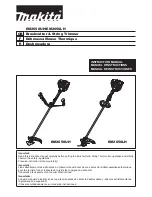
Calibration Procedure—442 Service
Adjustment Procedure
f.
CHECK—That a stable triggered display of the TV
line signal can be obtained by adjusting the LEVEL and
SLOPE control settings.
g.
Connect a IX probe tothe EXT TRIGGERING input
connector and connect the probe ground lead to the
circuit ground on the TV signal source. Connectthe probe
tip to a 100 mV composite sync signal source or 230 mV
composite video source (signal in phase with signal used
in part b).
h. Set SOURCE to EXT.
i. CHECK—That the TV line displayed signal can be
triggered by adjusting the LEVEL and SLOPE control
settings.
j. Set the SEC/DIV switch to .1 m.
k. CHECK—That the TV field displayed signal can be
triggered by adjusting the LEVEL and SLOPE control
settings.
I. Disconnect the test setup.
ADJUSTMENT PROCEDURE
IMPORTANT—PLEASE READ BEFORE USING THIS PROCEDURE
INTRODUCTION
Purpose
The purpose of the Adjustment Procedure isto provide
a calibration sequence for adjustments—not to provide a
troubleshooting guide. Refer to the Maintenance section
fortroubleshooting information.
Limits and Tolerances
The limits and tolerances listed in this Adjustment
Procedure are instrument specifications only if they are
listed in the Performance Requirement column of the
tables in Specification, Section 1.
Line Voltage Selection
Refer to the Preliminary Procedure preceding the
Adjustment Procedure steps for instructions on setting
the 442 for the available power input source voltage.
Internal Adjustments and Adjustment Interaction
Do not preset the internal controls or change the - 8
volt supply adjustment setting as this will typically
necessitate a complete recalibration of the instrument
when only a partial recalibration might otherwise be
necessary. To avoid unnecessary recalibration, change
internal control settings only when a Performance
Characteristic is not met with the original setting. When it
is necessary to changethe setting of any internal control,
also check any INTERACTION parts of that procedure
step.
Partial Procedures
This procedure is structured in subsections to permit
readjustment of individual sections of the instrument
(except the power supply) when a complete recalibration
is not required. For example: if only the Vertical section
fails to meet Performance Requirements or has had
repairs made and components replaced, it can be read
justed with little or no effect on other sections of the
instrument. However, if the Power Supply section has
undergone repairs or adjustment that changes the ab
solute values of any of the supply voltages, this may alter
the calibration of other sections and it will usually be
necessary to perform a complete Adjustment Procedure
including all subsections.
When performing only a partial procedure, each sub
section lists all the front panel control settings to prepare
the instrument for step 1 in that subsection. Each
succeeding step should then be performedinsequenceto
ensure that control setting changes will be correct for
ensuing steps. Each subsection also lists the test equip
ment required for the steps in that subsection.
4-12
REV A MAY 1980
Summary of Contents for 442
Page 9: ...442 Service 442 Oscilloscope viii REV A MAY 1980 ...
Page 113: ...Figure 7 4 442 Oscilloscope block diagram REV A JUN 1980 2 3 7 4 2 7 A ...
Page 117: ...A8 VERTICAL BOARD Figure 7 6 Vertical circuit board location ...
Page 118: ......
Page 120: ......
Page 122: ......
Page 123: ...Figure 7 8 interface circuit board location ...
Page 124: ......
Page 126: ......
Page 130: ...A ll TRIGGER SWITCH BOARD 2 3 7 4 3 6 A Figure 7 10 Trigger Switch circuit board location ...
Page 131: ...2 3 7 4 S 4 R ev jun VRSO V E R T IC A L OUT PUT CRT t PROBE ADJ 3 ...
Page 133: ......
Page 137: ......
Page 139: ......
Page 140: ...4 4 Z ...
Page 142: ......
Page 148: ...R EV K JUN 9SO ...
Page 153: ... 442 ...
Page 154: ...442 REV A DEC 1978 ...
Page 164: ......
















































